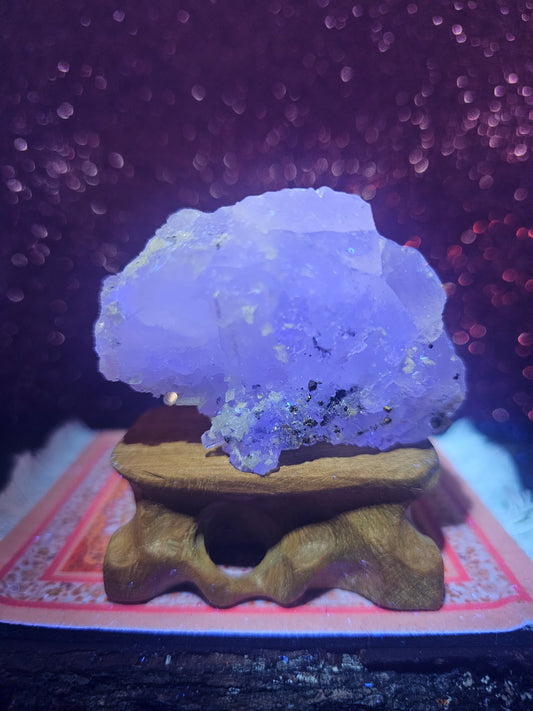Crystals are fascinating structures that form from atoms and molecules arranged in repeating patterns. They come in a variety of shapes and sizes and can be found all over the world. One of the most interesting things about crystals is the way they interact with light, particularly sunlight.
When sunlight interacts with crystals, several things can happen. The first thing to consider is the crystal's color. Many crystals have a characteristic color due to the way they absorb and reflect different wavelengths of light. For example, amethyst is a type of quartz that appears purple because it absorbs green and yellow light while reflecting blue and red light.
When sunlight enters a crystal, it can cause the crystal to fluoresce or emit light. Fluorescence is the process by which a material absorbs light at one wavelength and emits light at a longer wavelength. This effect can be seen in minerals such as calcite, fluorite, and scheelite, which emit different colors when exposed to UV light.
Sunlight can also cause some crystals to change color over time. This effect is known as photochromism, and it occurs when the crystal's structure is altered by exposure to light. One example of this is the mineral hackmanite, which is a type of sodalite that can change from white to purple when exposed to UV light. This change is reversible, meaning the crystal will return to its original color when the UV light is removed.
Another way sunlight can affect crystals is by causing them to fade over time. This is particularly true for crystals that are exposed to direct sunlight for extended periods. Over time, the UV radiation in sunlight can break down the crystal's structure and cause it to lose its color or become discolored. This is why it's important to store valuable crystals in a cool, dark place to prevent damage from sunlight.
Sunlight can have a variety of effects on crystals, including fluorescence, photochromism, and fading. While these effects can be fascinating to observe, it's important to take precautions to prevent damage to valuable crystals.





